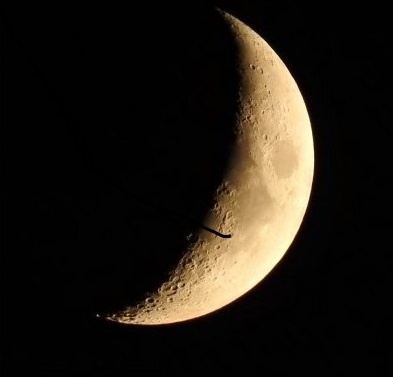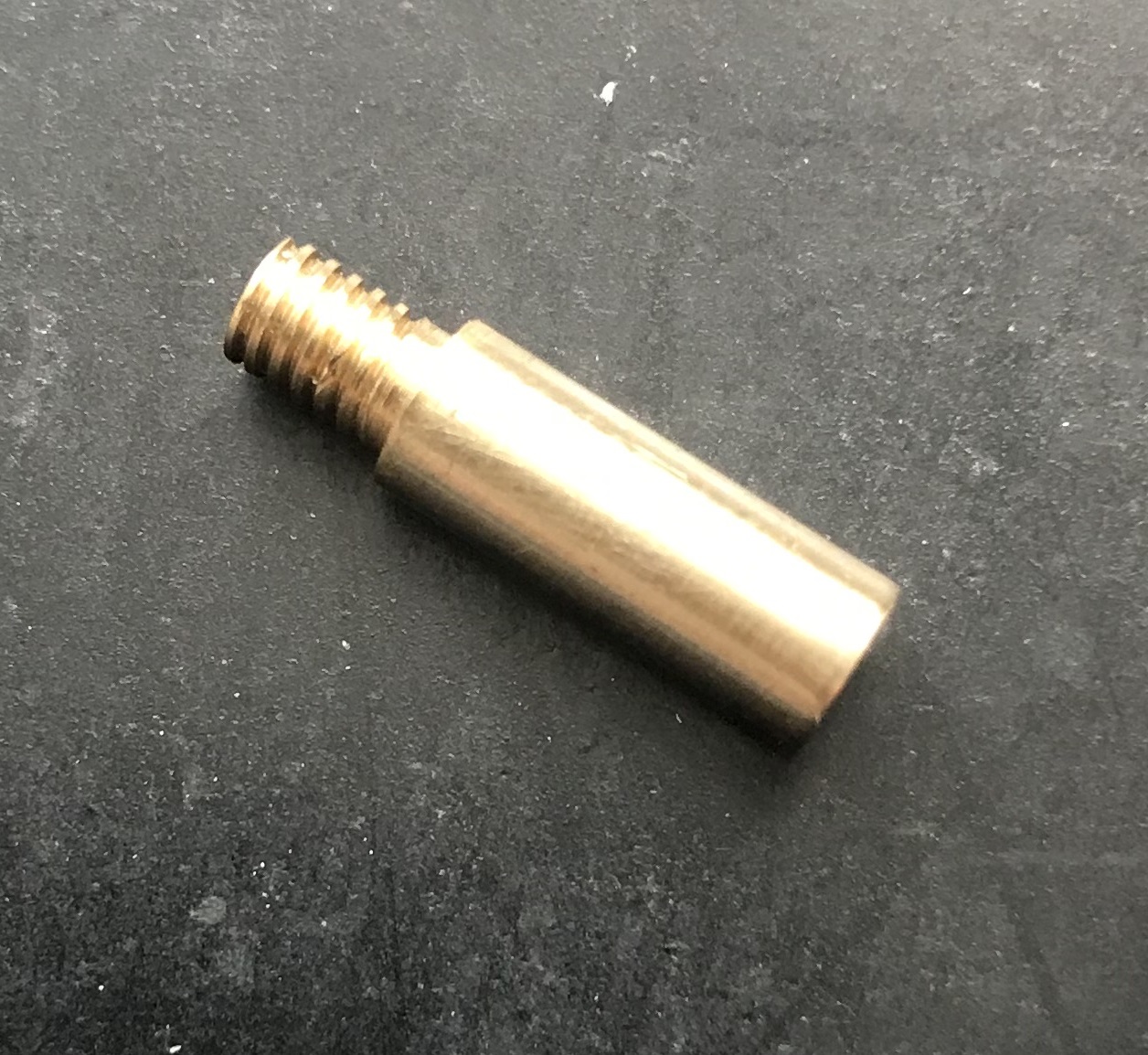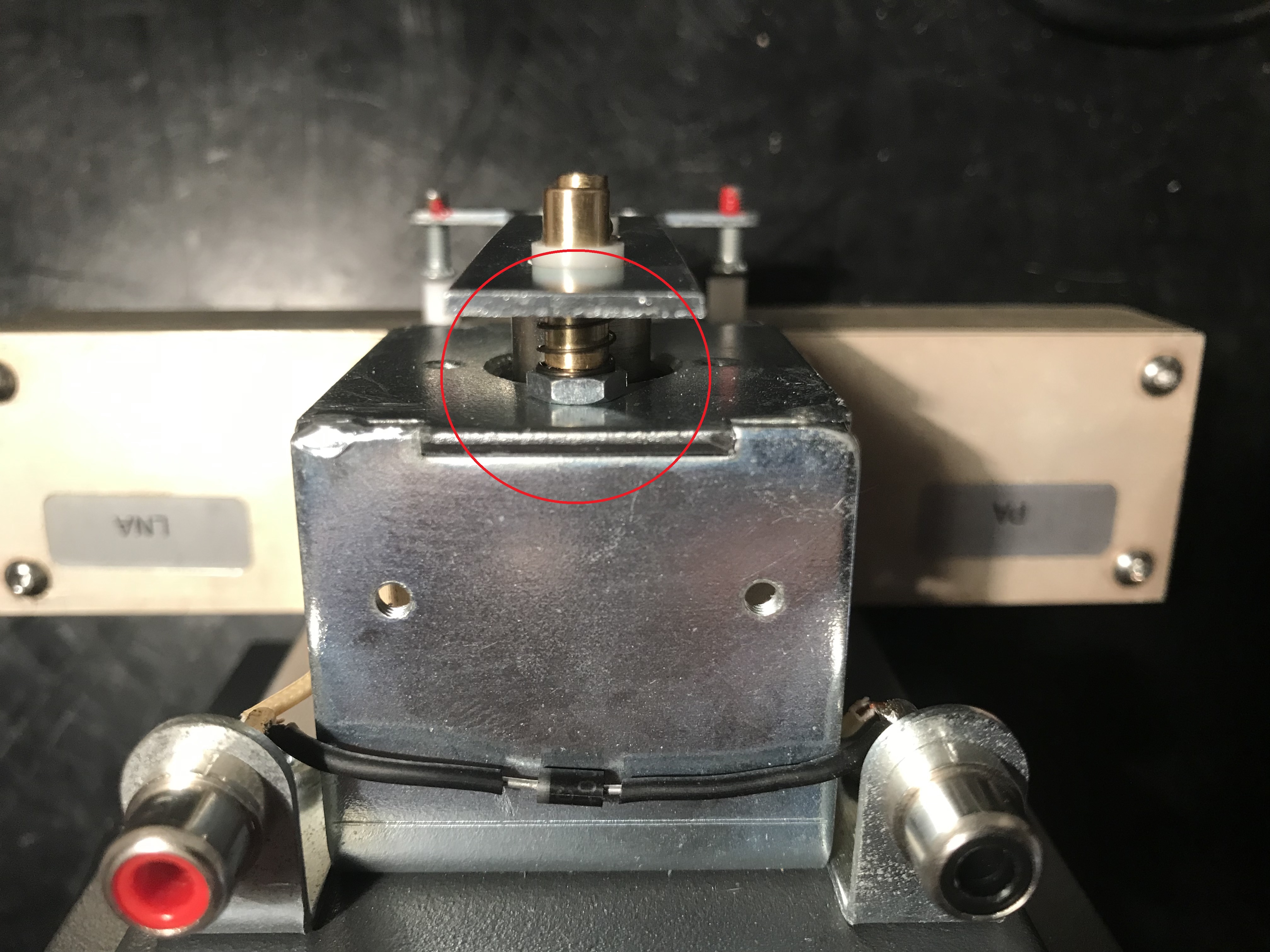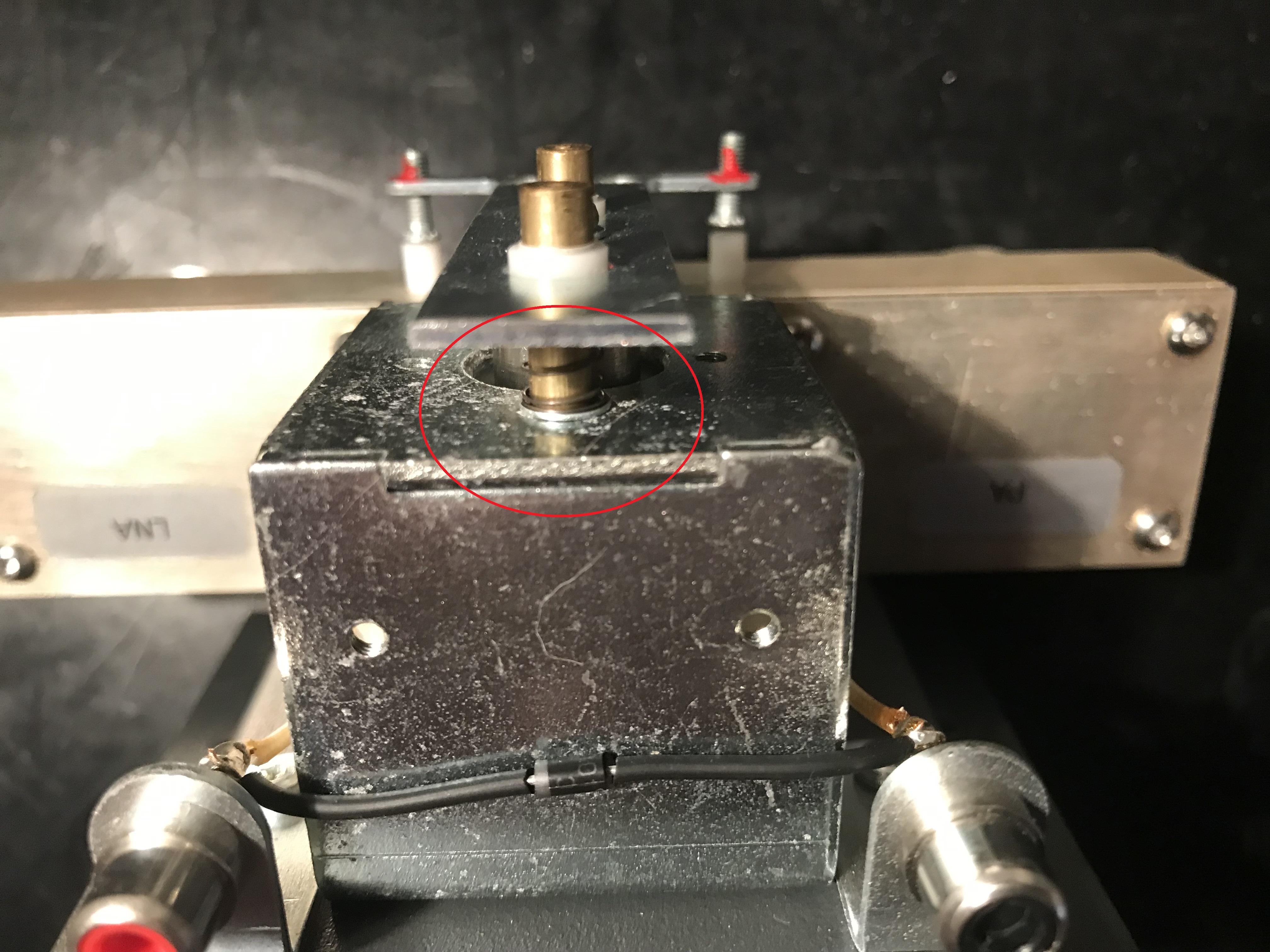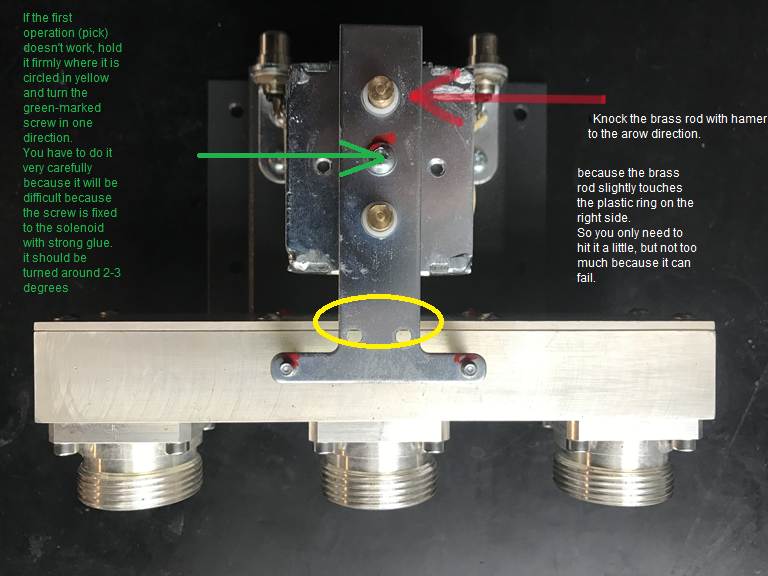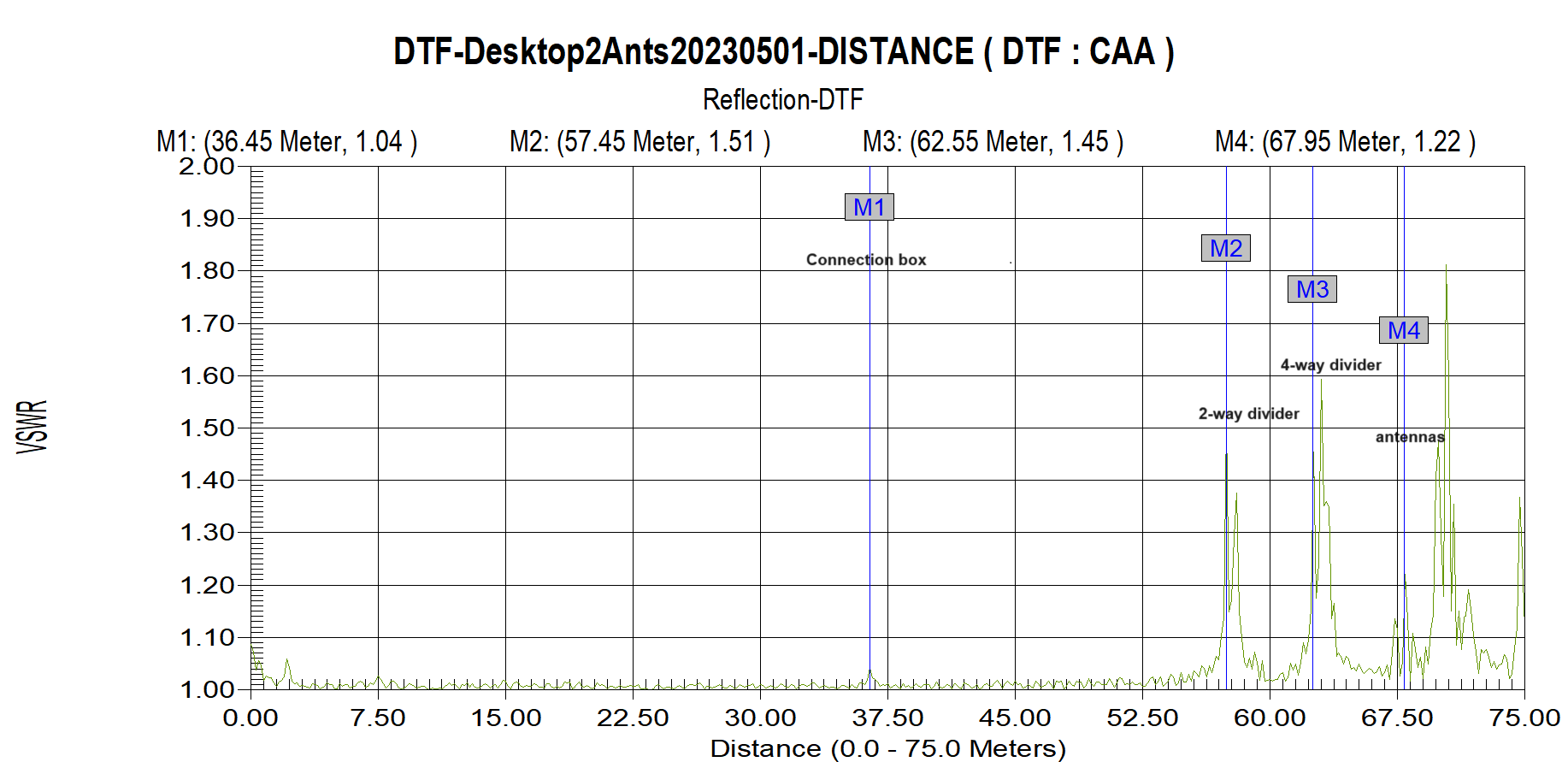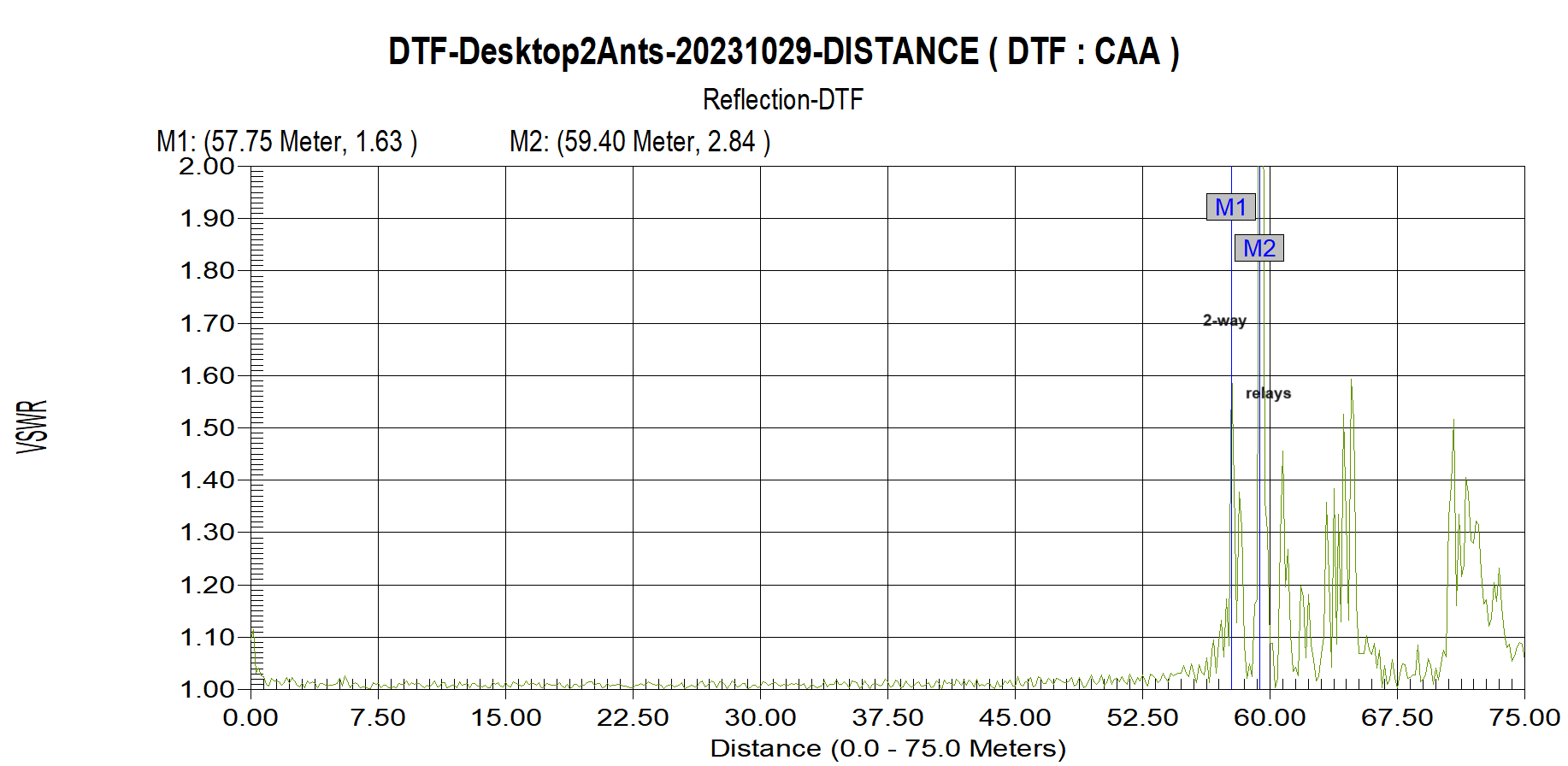Antenna relay problems
Oct 31, 2023
In January 2022 my SSPA shut down with a high VSWR warning when I was operating the 2m EME station. I tracked the problem down to the masthead control box that contains the antenna changeover relays and LNA’s. After testing on the work bench I found one antenna changeover relay sticking in the “on” (energised) position after control voltage was removed. The relays are setup to be energised during receive cycles so if it’s stuck “on” I would have been transmitting into an open circuit. See Station - RHCP arrangement.
Looking at the relay more closely I noticed that during operation the threaded rod attached to the bottom of the soleniod occasionally caught on the relay case, preventing the arm returning to it’s “off” position. This occured more frequently when the relay had been energised for over 15 minutes and starting to warm up.
The antenna relays are HCS3000-144 types from Hamtech so I contacted Pali, HA8YU for some help. He suggested tapping the threaded rod lightly with a hammer to move it to the centre of the hole. After a few taps I managed to move the rod a little (probably < 0.5mm) and the relay started to work correctly again, even after it had heated up. After further testing on the bench I reinstalled the control box at the masthead and everything worked as normal.
October 2023
During the 1st leg of this years ARRL EME contest, a couple of hours after moonrise on the second moon pass, the SSPA shut down with the high VSWR warning again. We have had a lot of heavy rain recently, especially during the evening on 28 October, and I thought maybe there some water penetration in the feeder or power dividers was causing the problem. On 29 October I tested the transmit side of the system using the DTF function on the VNA and it indicated a fault inside the LNA control box. In between heavy rain showers, I lowered the antennas to take a look inside the control box and found the same antenna changeover relay stuck in the “on” position with no control voltage applied.
With the relays back on the bench I noticed that when pressing the arm on problematic relay it felt rougher than the other relay and I could sometimes make the arm stay down. It looked as if the arm was sticking on the brass pin at the rear of the assembly. I cleaned the pins on each relay using a TePe brush dipped in isopropyl alcohol. I also unscrewed the pins on the problem relay and polished them with a nail buffer, using the 600# and 1500# grades. The mechanism is now a lot smoother and feels the same on both relays.
As a final step I sprayed the pins and threaded rod with dry PTFE lubricant.
Relay differences
In case someone has a similar problem, note that my HCS3000 relays are built slightly different. The pins on the problem relay are threaded onto a nut under the spring, before they screw into the solenoid body. On the other relay, the pins pass through what looks like a thin washer before screwing into the body. This relay has not caused any issues and I did not unscrew the pins on it.
Suggestions from Hamtech
Pali, HA8YU advised that it’s possible to re-align the pins by tapping them slightly in the direction required if they are too close to the plastic rings. If this has no effect, the other option is to move the screw on the centre arm by 2-3 degrees to make sure the arm is moving freely through the pins. This screw is held by red Loctite so may be difficult to adjust. So far, I have not had to make these adjustments.
A note on DTF measurements
I use a Viavi/JSDU combined VNA/Spectrum Analyzer for testing and measurements. This unit has a DTF function that is useful for tracking down antenna and cable related problems. Antenna analyzer’s such as the RigExpert AA600 have a TDR mode which is similar.
To track down the high VSWR problem I ran a DTF scan and compared it with one that I took in May 2023. In the top scan (May 2023) the peaks M2 2-way divider at 57.45m and M3 4-way divider at 62.55m are 5.1m apart. In the bottom scan (October 2023) there is a peak just 1.65m away from M1 2-way. I have marked this as M2 relays and this is is where the faulty antenna changeover relay is located.
